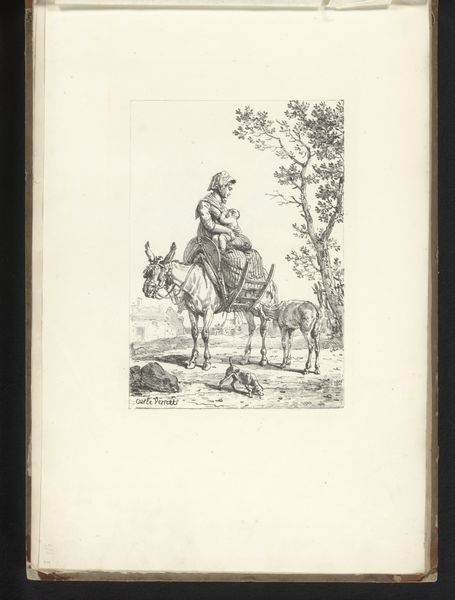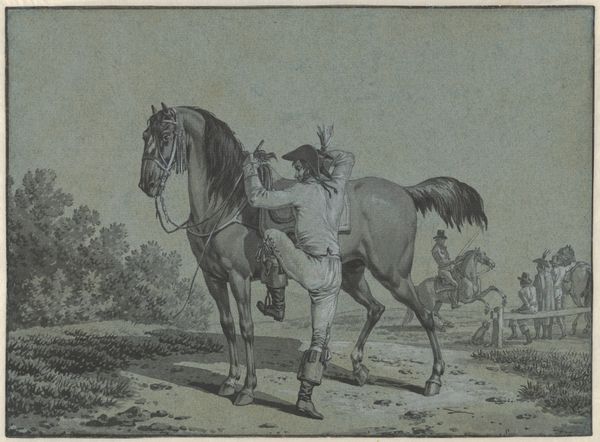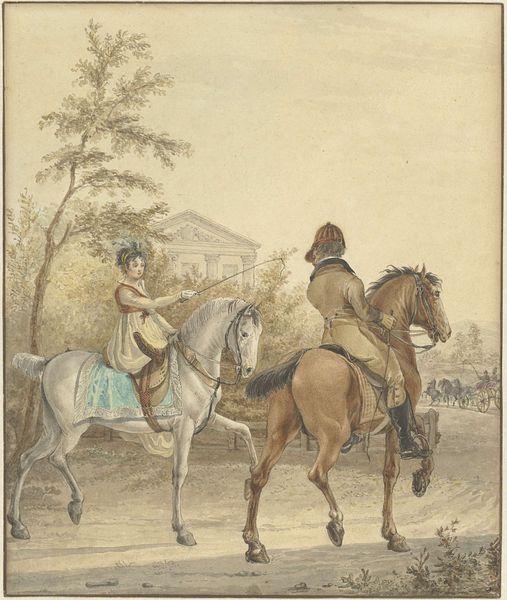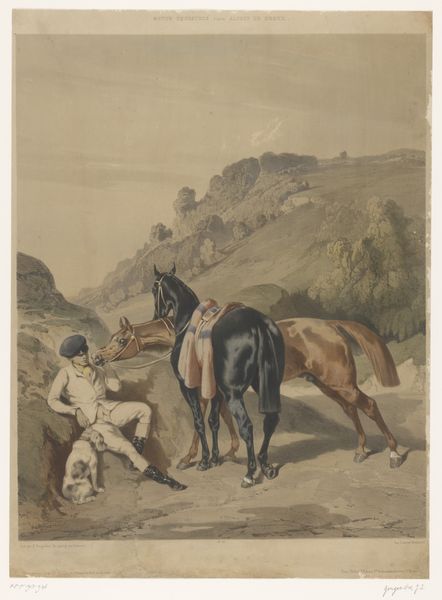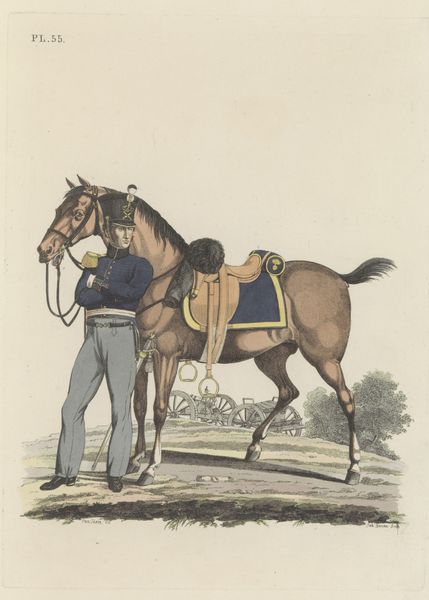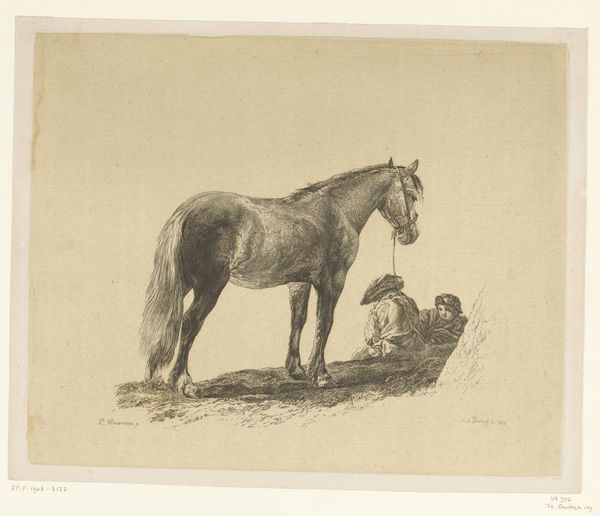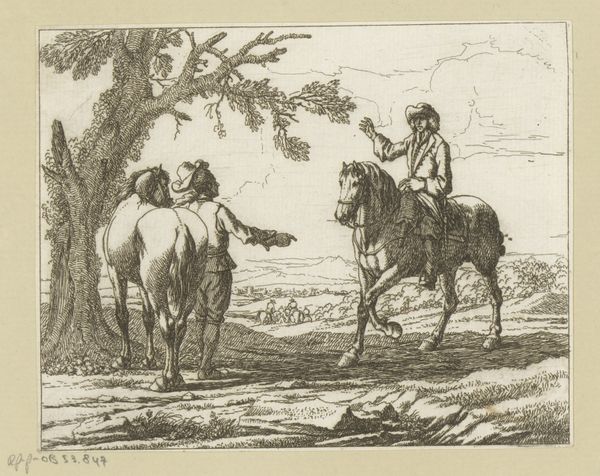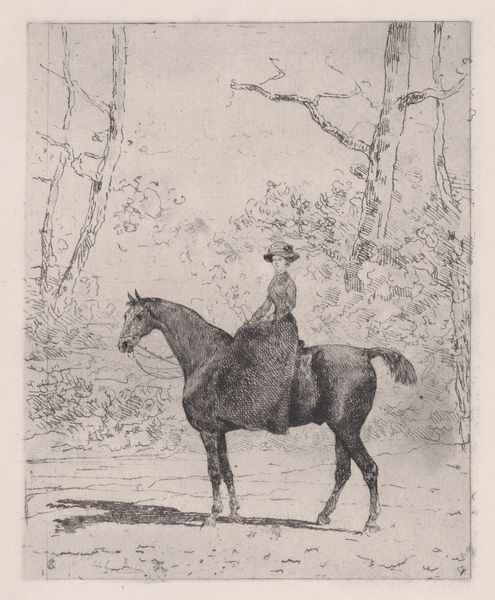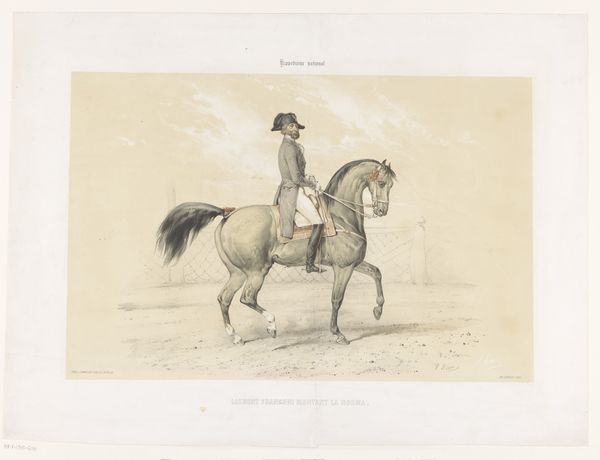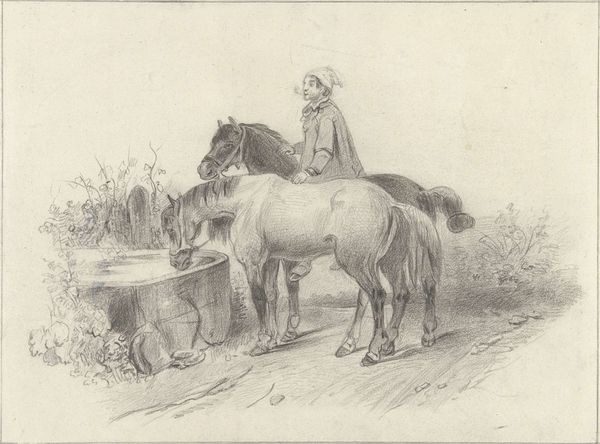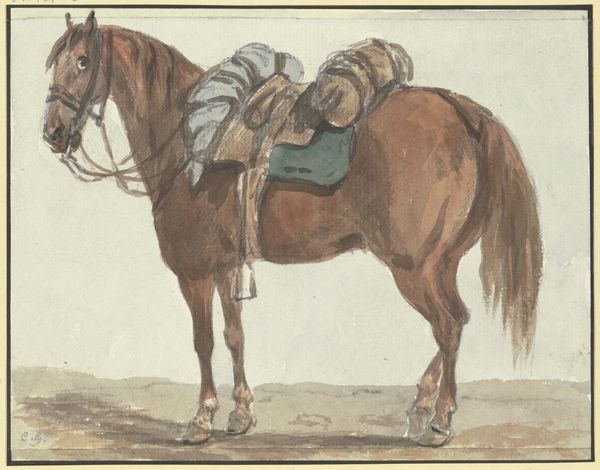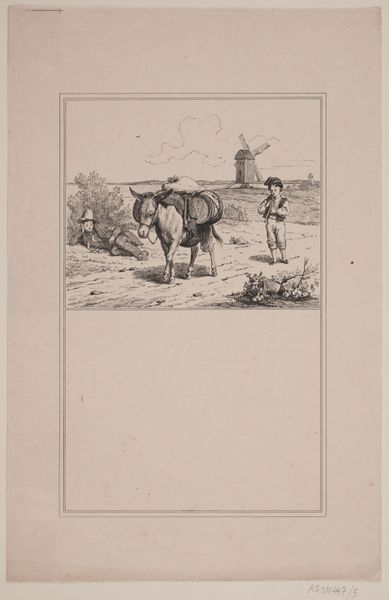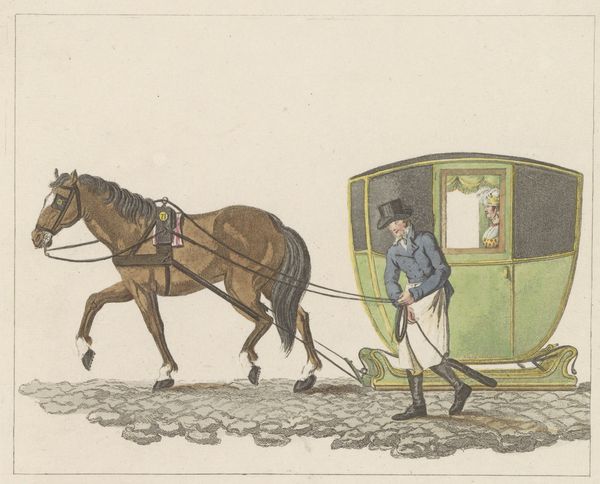
drawing, pencil
#
drawing
#
caricature
#
landscape
#
caricature
#
pencil
Dimensions: height 400 mm, width 270 mm
Copyright: Rijks Museum: Open Domain
Curator: Welcome to the Rijksmuseum. We’re standing before an interesting work, titled “De Ezel,” dating from 1894 to 1959. It’s a drawing rendered in pencil by an artist known only as Gordinne. Editor: My initial impression is one of tranquility tinged with melancholy. The palette is subdued, almost sepia-toned, creating a sense of faded memory. Curator: Indeed, the restrained color scheme reinforces that feeling. If we consider the work from a structuralist perspective, notice how Gordinne employs a very basic horizontal composition. We have the distinct foreground where the figures rest, divided by a slightly upward slanting plane giving way to background elements like the rudimentary shapes hinting at a windmill and fields. This suggests both rest and latent purpose, potential labor or perhaps, latent social criticism? Editor: That subdued landscape is a great juxtaposition with the dominant figures of the boy and the donkey. Windmills traditionally symbolize labor, while the donkey itself, traditionally called “De Ezel” in Dutch, represents either stubbornness or humility. What cultural narratives might Gordinne be playing with? The boy with the donkey evokes images of pastoral life but I am unsure what he seeks to say. It has a feel that the donkey will have to begin work at any time and they seem to be getting ready together. Curator: I agree the juxtaposition is key. What interests me is the relationship between the textural details; the soft coat of the donkey set against the rough texture of the tree bark, all meticulously rendered with a range of pencil techniques to achieve a certain tension on the surface. I do see potential narrative—one of a slow lifestyle, as he awaits for instructions. Editor: Well, beyond any explicit story, it invites viewers to consider the enduring bond between humans and animals, work and friendship. There’s an undeniable intimacy conveyed in their quiet pose. It invites introspection about what lies beyond the material world. It encourages reflection. Curator: Precisely, its open structure encourages the beholder to fill it with their understanding and assumptions based on form and composition to their own. This may not have mass appeal but still maintains significant interest. Editor: Yes, there's power here. This piece, however modest in appearance, lingers in the mind.
Comments
No comments
Be the first to comment and join the conversation on the ultimate creative platform.
